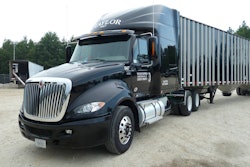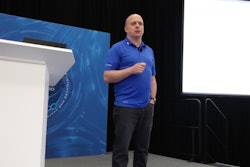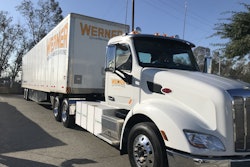 Motor carriers use the DRIVE FIRST training collection from Luma to create a paperless driver orientation and training process.
Motor carriers use the DRIVE FIRST training collection from Luma to create a paperless driver orientation and training process.Every week, Certified Freight Logistics (CFL) brought new drivers to its office for three days of orientation training. Drivers did not enjoy the experience of watching outdated videos and instructor-led PowerPoint presentations with printed handouts. The training process was also inefficient for office staff.
In March 2019, Tracey Smith, CFL’s driver recruiting manager, discovered the DRIVE FIRST online learning management system and training collection from Luma Brighter Learning.
The collection includes more than 350 individual learning modules called Luma eNuggets that cover relevant safety, compliance, orientation, and health & wellness topics. The average max time it takes for drivers to complete an eNugget module is 9.43 minutes.
“What stood out to me was how interactive the training content is,” Smith says. “Drivers can begin by testing their knowledge with assessment questions and then use a variety of media options to individualize their learning experience. The training also keeps drivers engaged with a game-like environment.”
CFL is assigning training to drivers before they arrive at the office. Drivers use their own mobile devices to complete the assigned eNuggets when traveling by bus or train. They also login from their hotel rooms during the off hours to complete orientation training online.
With online training, CFL is able to spread out the content so as to not overwhelm drivers with information, Smith says. In the classroom, instructors are able to focus their time on the most important topics to “make certain that drivers understand how we operate.”
Since CFL went live with Luma DRIVE FIRST in March 2019, the company has seen improvements in:
- Training efficiency. With the training platform, CFL has compressed its orientation period by one-half day (from three to 2.5 days). Drivers are learning faster and retaining more information.
- Driver satisfaction. To date, the feedback from drivers that go through CFL’s orientation has all been positive. Smith says a driver recently told her it was the best he’d ever experienced, “and he’s been through a lot of them.”
- Paperwork reduction. CFL plans to use the Rapid Forms feature in DRIVE FIRST to digitize its employment and policy forms. Having drivers complete forms online will save two hours in the classroom and eliminate paper.
- Cost savings. Replacing the outdated safety training videos with the new platform was a direct cost savings, and the technology and support from Luma will ensure its training content will never grow old or stale. “We are very happy with it,” Smith says.
Training drivers on demand
Since implementing DRIVE FIRST, Smith has noticed drivers are coming to class better prepared and retaining more information. With drivers completing the assessments before and during class, instructors are using the reporting tools to identify those who need additional help with specific training topics.
Besides tailoring the training to individual needs, CFL is able to customize the Luma eNuggets to its own company policies and procedures. For example, Smith has added company-specific training for reefer operations and created an eNugget for drivers to learn how to use CFL’s electronic logging device (ELD) system.
After orientation, CFL is assigning eNuggets to drivers monthly for ongoing training. Drivers can access the eNuggets from their mobile devices, and many are using them as an online reference tool for accessing information and training resources as needed.
“Drivers can retain information better with DRIVE FIRST and they can refer to it, so that has helped,” she says.
With headquarters in Santa Maria, Calif., Certified Freight Logistics has been an integral link in the food chain since 1928 and today operates a fleet of more than 135 tractors to deliver fresh foods in the western United States.











